Introduction
The Google Inc. is a giant Internet search engine technology provider incorporated in Delaware. It was founded in 1996 by Larry page and Sergey Brin. The company has grown over time to become one of the most successful and highly admired organizations in the world. Today, the company offers more than just mere search engine technology. Google’s strategy entails becoming the world’s leading Internet search engine by increasing ads to cover markets outside the US including emerging Russia and China.
The company’s strategy has been focusing on the acquisition of companies Motorola Mobility Center and Keyhole that helped in the diversification of its products. The Google Inc. adopts an exceptional business model that continues to influence unmatched growth and profitability. This paper provides a strategic analysis of the Google Inc. case including a SWOT, five forces analysis, strategy road map, and financial analysis with a view of pointing out its key success factors.
Company Overview
The birth of the giant search engine technology is attributed to the Stanford University where its two computer science graduate students, Larry Page and Sergey Brin, worked in partnership in 1996. Initially, the company was named the BackRub. The name changed to the Google Inc. in 1998, imitating the word googol that mathematically means the digit one (1) followed by a hundred (100) zeroes.
The search engine giant’s headquarters are based in Mountain View, CA, with various office locations around the world. Executives and a Board of Directors (BoD) manage the company. Its growth has been catapulted by its rapid innovations including wireless search technologies, search capabilities in more than ten languages, and the Google Toolbar browser plug-in that made it possible for users to enjoy the Internet search service without first visiting a Google-affiliated web portal.
Additional products by the end of 2004 included Google News, Google Product search, Google Local, and the Google Scholar. Additionally, Google’s web pages index increased to eight billion besides its country domains reaching one hundred and fifty by the year ending 2004.
The most historical success story of the Google Inc. was recorded on the first day of public offering. At the end of its first day of trading, the company’s shares appreciated by 18% making the two co-founders over $3.8 billion richer. At this time, its workforce had expanded reaching over 900 employees each approximately worth $1 million.
The Google Inc. Strategic Issue
The Google Inc. has not restricted its services to the Internet search technology only. Since 2005, the company has introduced numerous products through its robust innovations and the vast financial reserves. Through various strategic acquisitions, it developed new Internet applications to provide advertising opportunities that underpin the giant’s enormous success today. Notably, the acquisition of Keyhole, which was a digital mapping company, enabled the launching of the Google earth in 2005.
Additionally, Google acquired the Motorola Mobility for $12.5 billion in 2012. This acquisition placed the company in the hardware market offering competition to the Apple Inc. Having launched the Android operating system in 2008, venturing into the hardware segment will promote the integration of the software as seen in companies such as the Apple Inc. In 2007, Google maps were enhanced when the company added street-view images taken by traveling Google camera cars.
The technological strategy enabled users to link digital images, webcam feds, and videos to locations displayed by the Google maps software. Additionally, the company made it possible to link real estate listings and short personal messages to the Google Maps locations. The Google Maps received a major enhancement in 2010 when the earth-view mode was included allowing users to view 3D images of different locales from the ground level.
Google strategy included dominating the Internet advertising and the becoming the world’s leading search engine. In light of this strategy it enabled online ads with more than 41 languages around the world. As a result, a half of its 2012 revenues came outside the United States. In 2013, the company strategy focused on venturing into emerging markets including Russia and China.
However, entering the largest emerging market, China, faced tough challenges. The greatest threat in China was stiff competition from local search providers such as Baidu. Second, tough government’s requirements that included censoring search results. Disagreements with the government saw Google controlling only 3% of the Chinese market.
External Environment
Google’s PESTEL Analysis
This PESTEL analysis section seeks to provide an in-depth insight into Google’s success factors from the macro-environment that serve as both opportunities and threats. These factors influence the company’s strategy formulation. Addressing the threats whilst taking up opportunities availed by the remote environment is vital for the growth and performance of the organization. In so doing, the company will sustain its competitive position as the world’s leading online search engine.
Political Factors
The political factors in the macro-environment influence Google’s decisions ad operations. Opportunities offered by the political factors globalization and the stable political climate in a booster markets. The major threat is the state-sponsored online competitors. Globalization has offered a prime opportunity for the Mountain View, CA-based search engine to exploit the vast online market from a more informed global population.
It also helps in the spreading of information, awakening, and changes from traditional practices amongst consumers and organizations. In a knowledge-guided economy, the Google Inc. plays a vital role in changing lives as it rolls over its new products across borders. Moreover, the stable political climate in booster markets creates the favorable environment for Google to maximize profits.
Economic Factors
According to the PESTEL analysis, external economic factors play the role of influencing opportunities available for organizations. The Google Inc. thrives under economic stability of its major markets and the rigorous growth of developing and emerging economies. These factors are viable opportunities for the Google Inc.
They create new momentum for the company to explore and invest. In fact, company can expand globally owing to these economic factors. The increasing gross domestic product for most countries including South Africa, China, India, and the United Kingdom is good news for the Google Inc. The increase in GDP for these countries among others indicates an economic growth.
Changes in interest rates affect investment companies, especially those that target global markets. However, it is worth noting that economic factors have little impact on technology and online investors such as the Google Inc. The company is isolated from economic forces since it relies on virtual investments via the Internet. As such, economic turbulence and financial crises have little impact on the Google’s business model.
Socio-Cultural Factors
Socio-cultural factors refer to the overall customers’ response to Google’s products. These factors can act as either opportunities or barriers to the company’s growth. The rising diversity of internet users represents an opportunity whereas the increasing use of social media is a threat to Google’s business.
As the world becomes increasingly interconnected through the Internet’s communication capabilities, Google’s business stands to thrive even higher than before. The increased connectivity through smartphones and tablets is an opportunity that has changed people’s beliefs and perceptions over time. Today, people utilize the Google Maps feature available in mobile platforms to search for directions, restaurants, and drive-ins among other locations.
Additionally, people can download free MP3s music and videos besides keeping in touch with their favorite sport events, scores, and fixtures. Google is well positioned since it targets the young population user-base with its fascinating products such as the Mobile Google App and the Android OS that are both user-friendly and interactive. Most of the Google’s applications are downloadable across all mobile platforms including the Apple IPhone and BlackBerry among others.
Internet use is gender-neutral. In light of this cultural factor, gender issues less affect the Google Inc.’s business. In addition, changes in gender ratios do not adversely affect its interventions at all. As such, Google’s business model remains strong across the majority of socio-cultural spectrums. Instead, the company benefits when people abandon their traditional ways and start using the Internet.
Technological Factors
Google’s technological capacity improves with every bit of advancement as a strategy to remain relevant. For instance, the company is known for using cheap computer components that can be swapped with upgraded ones. This phenomenon indicates a high level of grand strategy.
Google’s business is shielded from geographic dependence since the applicability of the Internet is universal across most cultures. In this regard, the company has offices in both the United States and many countries around the world. According to the PESTEL analysis, technological factors are deemed as either enhancers or breakers of business.
Two chief external technological factors underpin Google’s growth. These factors include the rapid growth of internet users in developing countries and the increasing evolution of smartphones in the global market. Google taps these opportunities as it designs its products to suit the mobile platform (see Figure 7 in the appendix).
Legal Factors
The legal factors have far-reaching impacts on the limits of what organizations can do. Google’s macro-environment is influenced by the growing concerns and regulations of the Internet on its privacy issues. Second, regulations of intellectual property influence the extent of the company’s operations.
However, it builds on these legal factors by improving the protection of people’s information archived in their online storage avenues. Again, the company can develop robust approaches to deter people’s violation of the intellectual property rights through its innovative capabilities.
Porter’s Five Forces Analysis
The Porter’s Five Forces Model is a tool used by organizations to gain insight into the macro-environment with a view of aligning its strategic objectives. Given the ever-changing business landscape, uncertainty, and the wave of globalization, it is important for organizations to improve their external environments.
The tool enables one to analyze the environment with a view of identifying potential issues that are likely to influence the organization’s strategic growth. As coined by Michael E. Porter in 1979, the tool takes a close account of rival players in the industry in which the given organization falls. Factors such as supplier power, barriers to entry, competitive rivalry, threat of substitutes, and buyers’ power closely influence the Google’s external environment (Gamble, 2013).
The Google Inc. witnesses fierce competition that can limit its growth capabilities. The company ought to take into account various external factors based on the market competition including the number and diversity of firms besides the low switching costs that exert moderate to strong force.
Google’s chief rivals include Yahoo, Bing, Apple, and Comcast among others. The company has diversified into numerous product lines including advertising, the Google Glass, Google Fiber, Mobile Android OS, and Chromecast among others. This product diversification has attracted stiff competition. However, the Google Inc. has managed to achieve an unmatched competitive edge over its rivals through its innovation and product differentiation.
The bargaining power of Google’s customers is weak; hence, it provides the company an opportunity to control both the demand and supply of its products. Several factors underpin the weak bargaining power for Google’s products. At the outset, the small size of individual buyers, which represents a weak force, exerts minimal effects on the giant search engine.
Individual buyers have little contribution to the company’s revenue. Secondly, the high and increasing demand for online products of the Google Inc. and its rivals makes individual customers put little force on the company.
Suppliers’ bargaining is weak since Google has numerous alternatives products. This weak bargaining power of suppliers is attributable to various factors including the high number of suppliers and their high availability in the industry. The two factors lower the bargaining power since Google can select from a large pool at controlled costs. This situation makes it possible for the company to switch from one supplier to another. The suppliers are diverse as they correspond to Google’s array of products.
The Google Inc. experiences a low to moderate threat of product substitution. Some of the substitutes include the traditional advertising channels such as television, radio, and print media. The moderate threat of substitutes stems from low switching costs and the medium to high availability of those alternatives.
The fact that customers can move away from Google’s ads exerts little force on the company. Moreover, there is a moderate threat of new entry that influences Google’s business in a number of ways. First, the moderate cost of doing business for startups and new ventures imply that Google stands the risk of increased competition. However, due to the high cost of brand development, new ventures find it difficult to enter the Internet advertising and other online businesses.
Company Situation
Google’s SWOT Analysis
SWOT analysis stands for strengths, weaknesses, opportunities, and threats. It seeks to provide a company’s microenvironment and macro-environment factors that surround it as a business entity. This section provides a detailed SWOT analysis for the Google Inc. (Gamble, 2013). Figure 3 on the appendices shows the Google’s SWOT analysis chart.
Strengths
The Google Inc. boasts several strengths of its internal environment. First, the company incorporates its mission (reorganizing the world’s information making it universally accessible and useful) in each product. Open source products and services for Google including Google Maps, web-based calendars, drive, OS, and the hardware devices are deemed to have exceptional quality.
Its openness gives the company flexibility to innovate in any direction without restricting its expertise to one line of business. Second, the company offers high-quality customer experience. All its products are built to ensure premium experience to its customers. The organization ensures that its products solve practical needs to the customers. For instance, linking Google Maps with digital images to indicate locations and other features helps customers to keep track of photography moments at different events and localities.
The financial position of the Google Inc. is vast enough to support all its operations and ambitions. The company’s financial data on profitability and liquidity for the years between 2001 and 2006 (shown in figures 3, 4, and 5 respectively). The company is one of the most profitable businesses in the world with earnings approximated at $ 49.99 billion and more than $10.99 billion profits (21.9%). Its liquidity reaches over $47 billion and a debt of nearly $.6.9 billion only.
This vast financial position provides a major thrust for the company to invest in technology and the best human capital. Its online advertising is very successful as it is the top revenue earner for the giant search engine. The company strikes exciting deals with online sites that allow Google Ads to appear for customer to view.
Viral advertising is a magical phenomenon for Google that has leveraged its high profitability year in year out. Google’s performance has been rapidly growing relative to its rivals as indicated in the appendix (See Figure 5). Figure 6 shows the Financial Ration analysis of the Google Inc.
The Google Inc. also has unbeatable strong patents portfolio. In fact, the addition of more than 1150 patents back in 2012 placed the company at position 21 on the world’s patents ranking (Gamble, 2013). Intellectual property for the Google Inc. is the most vital component that leverages the attainment of a competitive edge over its rivals.
The Motorola’s acquisition gave Google a strong advantage relative to its rivals. Further, product integration is one of the most significant Google’s internal strengths. The integration of all its products with each other forms a viable ecosystem for excellent customer experience. The purchasing of one product creates the need for another. This integration is rare with most of the major tech-organizations in the entire world.
Weaknesses
Google faces several internal limitations. First, it relies on a single source of income, advertising. As at 2013, online advertising had grown with double digits that grew the company’s income. Second, Google has only a single search box. This phenomenon makes it hard for the company to change context from a finder to a producer.
The company has been criticized based on online privacy. Critics say that users can view other users’ profile information in accounts including YouTube, Picasa, and Orkut. Besides, the litigations facing the company are costly and resource consuming. It is a source of distraction from its business errands.
Opportunities
The Internet industry is ever growing. The bust of smartphones has presented the Google Inc. with prime opportunities for growth and success. Today, the number of internet users is enormous, especially with the evolution of smartphones. The company has seized the growing smartphone industry to increase its online services.
In addition, the Google Inc. has numerous unexploited opportunities including the creation of an independent browser that can speed up Internet downloads and upgrading of its systems to enhance real-time feedback to its infinite customer base. With the growing number of smartphone manufacturers around the world, Google stands to gain through extended deals.
Its independent database software can organize databases for improved refined search for customers. In addition, the company continues to tap into continued network expansions. Besides, Google News functionality stands to grow as local news become more important to communities. The emerging markets such as China present prime opportunities for the company to extend its services for additional growth.
Threats
The Google Inc. faces a variety of threats such as copyright lawsuits and issues on music, books, and movies, and legal issues affecting YouTube. In addition, the public’s perception of the storage of their private data by Google is a serious threat to the growth of its customers’ base. The presence of the anti-spyware software and programs threaten to block Google cookies. This situation can influence the growth of AdWords and AdSense capabilities.
Moreover, the security of the Google’s servers is not guaranteed as the access by hackers can result in massive devastation. The rumored partnership of Microsoft and Yahoo! is a serious peril to the Google Inc. Its free services continue to burden the company since they trigger losses. The introduction of unprofitable or low value products can cause its profits to plummet in the near future.
Recommendations
Google’s Generic Strategy
Google’s strategic choices are directly related with its core business objectives and the overall aspects of the industry. Its generic strategy is an all-encompassing influence on the company’s activities. Google’s generic strategy has greatly affected the highly competitive environment.
It is based on product differentiation, market development, and innovation. Based on the Porter’s model, the company’s generic strategy is mainly differentiation. This peculiar business technique has continually acted as a major impetus for Google’s competitive advantage. The company distinguishes itself from its competitors through product differentiation. Innovation has also been the company’s strength. The Google Inc. has added new products such as the Google Fiber and Google Glass through its proactive innovations.
It is worth noting that the Google’s algorithm evolves over time to spur competitiveness and growth. Researchers argue that the continued evolution of the Google’s algorithm out wins the Yahoo! and Bing search engines, which are the closest rivals. Continued innovation makes the Google Inc. unique and unbeatable.
The generic strategy of differentiation is aligned with the company’s objective of product development. Additionally, the company ensures that its existing products are continually improved to sustain the company’s market share and profitability (Gamble, 2013). Through its generic strategy of differentiation, the company remains highly competitive relative to other players in the industry.
Google’s Grand Strategy
A grand strategy entails the comprehensive frameworks that help in laying out strategic actions of an organization. They focus on the long-term course of a business. Some of the Google’s grand strategies include concentrated growth, market and product development, innovation, concentric and conglomerate diversification, and strategic alliances.
Google’s momentum of growth will continue following its exceptional performance. Its ambitious scanning of global high-tech innovations is a key impetus of this growth. The company is the most admired employer in the world. Market growth is a low-risk strategy since it focuses on developing the market base of the existing product rather than research and product development (Gamble, 2013).
Just like Facebook, Google runs the web like a cartel where it sets both the demand and supply of its products. This way, the company boasts the opportunity to increase demand for its existing products. Google’s swim strategy enhanced fifteen acquisitions, one of which paid approximately $1billion.
The Waze, an Israeli traffic report application paid the amount that demonstrated Google’s strength of its grand strategy. The acquisitions help the company to invest in broadening its expertise in engineering, technology, and product offerings. Additionally, its mission of being everywhere underpins Google’s grand strategy. This way, the swimming strategy enables the company to be successful in each innovation.
Product development is one of the Google Inc.’s grand strategies. Through its unbeatable innovative capabilities, the company’s enthusiasts continue to grin as it launches new products one after another. For instance, the launching of the Android operating system (the leading mobile user interface), the Chromecast device, and the Nexus 7 tablet are significant strategies for the company’s long-term growth and sustainability.
However, the company has grown past ads. Today, it has a myriad of exciting products that customers throughout the world have developed unshakable loyalty (Gamble, 2013). For instance, the Android OS for mobile smartphones and tablets tops the list of the most popular operating systems beating the Apple Inc.’s IOS and BlackBerry that ruled before.
Market Development (Using the 4Ps)
Google’s market penetration is the main strategy for its intensive growth abroad. Outside the United States, Google competes with other giant search engines and online advertising. The company utilizes market penetration to compete with these companies. It continues to strive for a bigger share of the global Internet advertising market.
Market development is a key intensive strategy for Google Inc. In the US, the company adopts the intensive strategy for the Google Fiber product and cable television. This approach has worked for the company in various states including Kansas, Missouri, Texas, and Utah. The market development plan will leverage the launch of fiber product and cable television in additional states and abroad.
The Google Inc.’s robust marketing mix has largely leveraged its success. The giant search engine has developed numerous products including the Google Glass and Google Fiber. The company’s marketing mix embraces varied approaches to suit its diversified products. The Google Inc. expanded from a mere web-based firm to provide mobile smartphone devices such as the Nexus and Chromecast media devices, Android operating systems, desktop applications, and mobile apps among other services.
This product diversification is a clear indication of the company’s growth and market expansion. The generic strategy helps the company to expand its market share for existing products such as the Google AdWords and Nexus among others. The 4Ps stand for place, product, promotion, and placement.
The Google’s place component of its marketing mix is typically online locations. The platform is used for the distribution of products in a way that customers can access them via the Internet. For instance, customers from any physical locations around the word can download the Google Maps app so long as they have internet connectivity.
The utility of the internet across borders helps the company to market its digital products to customers far away without face-to-face interaction. It utilizes retail stores as the main distributors of hardware products such as the Nexus smartphones. For such items, Google chooses largely established retailers to increase the sales volumes and extensive access by large populations of potential buyers.
Google’s promotion component of the marketing mix is not very proactive since its reputation and market dominance plays that role. However, minimal product promotions are carried out through online advertisements such as the Gmail for work ads that frequent many sites.
Google’s prices and pricing strategies are diversified in accordance with the different product lines. Examples of such strategies include freemium, marketing-oriented, penetration, and value-based pricing. First, Google uses the freemium pricing strategy to offer free products as it sells their premium or add-on features. The product sold under this strategy is the Gmail. Second, the market-oriented pricing approach determines product prices based on the characteristics of the target market.
The Chromecast is priced using market-oriented approach. Third, the penetration pricing entails providing new products at low prices in a market dominated by strong competitors. This approach helps Google to gain market share through low pricing of its products. This strategy has worked for the Google Fiber Internet and cable television service.
Finally yet importantly, the value-based method determines the product’s prices based on its customers’ perceived value. For instance, the strategy works best for AdWords online adverting service since advertisers bidding is determined by their perceived significance of advertising their products.
Product Development
The product development strategy for Google is implemented through its proactive innovation. The development of new products such as the Google Glass, the driverless car, and Nexus mobile devices puts the company above its rivals in the technology industry. This intensive strategy has helped the Google Inc. to create additional sources of revenue generation. These grand strategies correspond to the company’s strategic objectives.
Google’s Key Success Factors
The company’s key success factors include a coordinated leadership group, commitment to cutting edge, wise expansion, and subtle marketing. Google boasts a strongly coordinated classic leadership molecule of three leaders including the founders Brin and Page, and the Chief Executive Officer, Schmidt. It integrates high-tech into its business that ensures that customers enjoy high quality services including the Universal search, Real-time search, and Google Instant.
These new tech capabilities promote customer convenience and satisfaction. The company has provided a stepping-stone to its diversification outside the search engine business through its acquisition strategies. Moreover, it adopts a proactive marketing strategy for its brand name in distinguished ways. For instance, the Google letters that appear on the home page and the Google doodle, mostly seen during holidays, are under-the-radar marketing techniques.
Conclusion
The Google Inc. is the leading online advertising firm in the world. Founded by two Stanford undergraduate students, the company has revolutionized the advertising business in the world. Through its generic and grand strategies, it has continued to grow and command the largest market share across the global markets. The Google Inc. boasts its control over both the demand and supply of its products.
Recently, the company diversified its products portfolio ranging from virtual desktop and mobile apps to the Nexus mobile, and the world’s most popular Android Operating system. This strategic analysis has adopted various tools including Porter’s Five Model, SWOT analysis, and the PESTEL/PESTLE analysis to address Google’s both micro and macro-environments. With the growing demand for
Internet services, especially in the knowledge-driven world economy, the number of searches is expected to rise markedly. The business model makes the company seldom affected by economic, political, legal, and socio-cultural factors. The Google Inc. can increase its competitiveness through investing in app development. With the increasing demand for mobile apps in other sectors including banking, healthcare, and insurance, Google can utilize its innovative capabilities to fill this market gap.
Appendices
Figure 1: Porter’s Five Forces Model
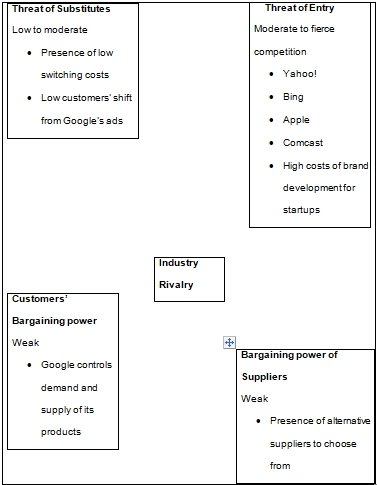
Figure 2: Google’s Marketing Mix

Figure 3: Google’s SWOT Analysis
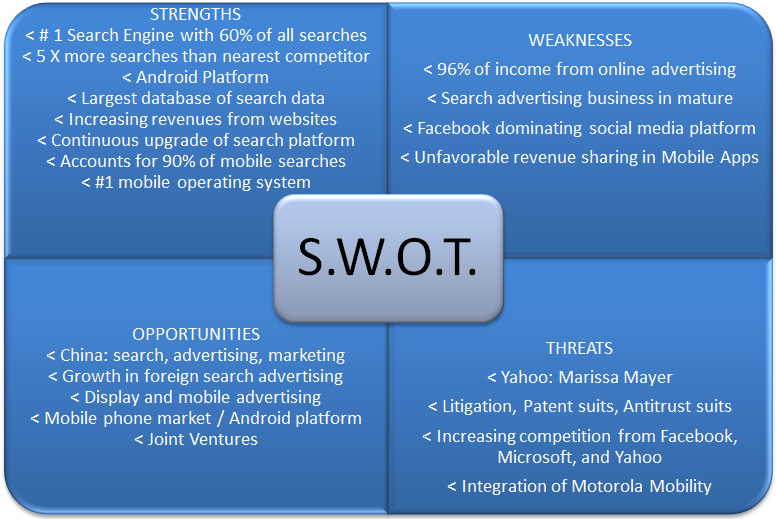
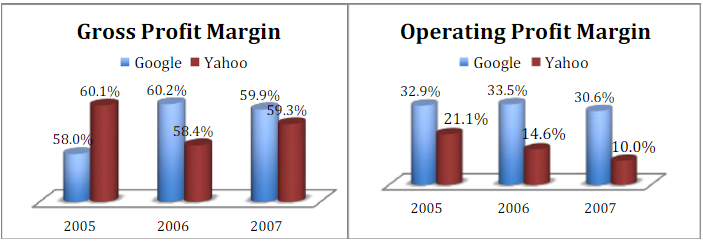
Figure 4: Google’s Profitability analysis
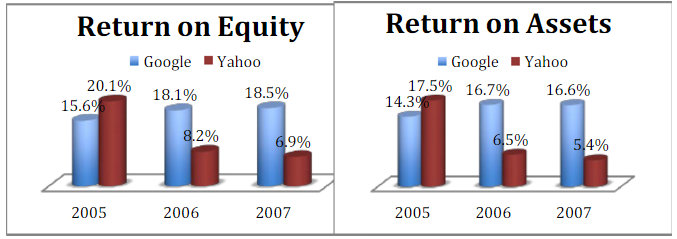
Figure 5: Google’s Liquidity analysis
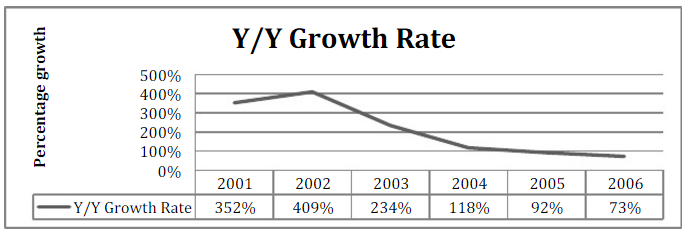
Google’s annual growth and performance between 2001 and 2006
Figure 6: Google’s Financial ratios for the year 2013
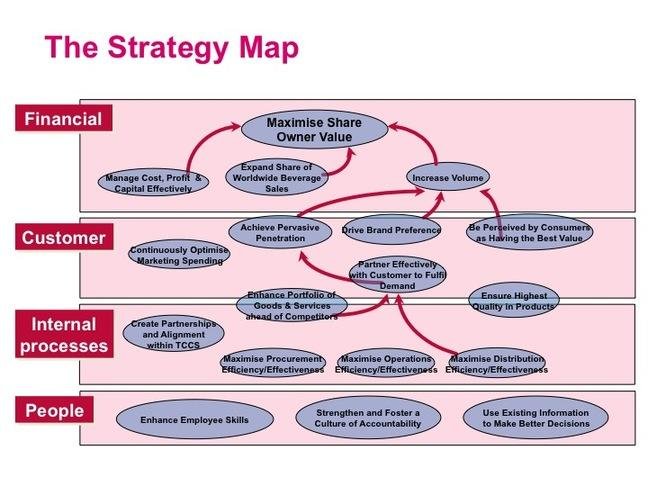
Figure 7: Google’s Strategic Map
Reference
Gamble, J. (2013). Google’s Strategy in 2013. Web.